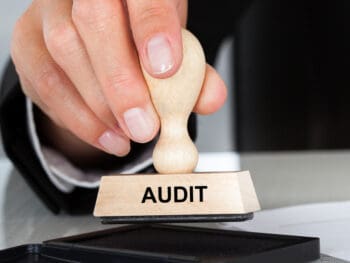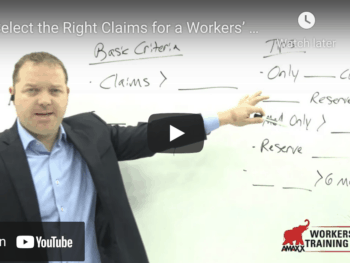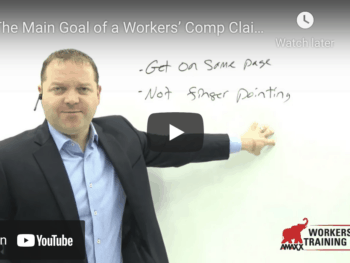Looking to reduce your workers’ compensation costs, improve outcomes, lower your ex-mod? Plan and prep for your next claims audit/review. This is a tremendous opportunity to ramp up your workers’ compensation program and make it best-in-class.
Even though the vast majority of employers engage in these sessions the results are fairly dismal; instead of being a synergistic way to improve an injury management program, they often end up as a finger-pointing session and lead to the production of a report that sits on a dusty shelf and is forgotten. But with proper planning, execution, and follow-up, you could potentially see your ex-mod cut in half in just a couple of years.
Building Relationships
A claims audit/review brings together the parties involved in the claims handling process; the employer, carrier/TPA, broker, medical experts and any others who might lend some insight. These sessions can benefit an employer in two ways:
- To get a big picture view of how claims are being handled and areas that could be improved
- To look at specific claims and figure out how to move them forward to closure
Click Link to Access Free PDF Download
“Workers’ Comp Claims Review Checklist: 9 Must-Have, Serious-Impact Elements”
Planning
The goal of a claims audit/review is to develop a team mentality, where each party understands what the others are doing in working toward a common goal. This requires everyone involved to be open to listening to one another and begin to forge bonds. Follow several specific strategies:
- Stop the blame game. Too often employers and others see the claims audit/review as a chance to point out what they perceive as failures by the other parties.
- The carrier or TPA is not doing its job
- The adjuster isn’t doing a proper investigation
- The medical providers are not getting people back to work
- The employer doesn’t take responsibility for its role in the process
A session based on finger pointing is a negative waste of time for everyone involved.
- Set expectations. Each party in the claims audit/review should understand what he is expected to do to help claims progress. The activities of each are dependent on the actions of the others.
For example, the adjuster cannot make 3-point contact within 24 hours of the injury if the employer doesn’t report the claim for several days or longer. The employer must understand his responsibility for timely claims reporting, while the adjuster needs to be committed to making early contact.
- Keep communication channels open. The audit/review should be seen as the beginning of a relationship, not a one and done event. Employers and adjusters should maintain contact with one another after the session.
- Select the right claims. For small organizations with just a few claims, it’s appropriate to review every claim. Companies with hundreds of claims must be selective. Ideally, there should be a number of ‘typical’ claims, as well as some that may raise red flags. There are several ways to identify claims to be reviewed, examples include:
- Claims with large reserves, especially if they have been open for more than a year, and medical-only claims that have been open for at least six months.
- Large medical-only claims. An injury that does not render the worker unable to work but includes significant expenses may have something unusual about it that needs to be examined.
The claims selected should not include any personal information about the injured worker.
Execution
- Review specific aspects. There are a multitude of aspects to every claim that could be discussed and analyzed. But instead of nitpicking, select the areas that are most telling about the claim. For example
- Was the claim reported promptly?
- 3-point contact. Were the employee, employer, and physician contacted within 24 hours of the injury?
- Was a recorded statement taken of the injured worker and witnesses?
- Treating physician. Was medical control established?
- Post-appointment contact. Was there follow-up with the injured worker after the first appointment with a medical provider?
- Were checks issued to the injured worker promptly?
- Did someone contact the injured worker and explain timelines and other aspects of the workers’ compensation process?
- Were state forms filed timely?
- Were they put up properly and timely? And were reserves reviewed for reduction or closure timely?
- Follow-up. To make the claims audit/review truly meaningful requires the parties to agree on ways to proceed. A designated person should issue a report following the meeting. But rather than it going up on a shelf collecting dust, it should include action steps for each participant which should be agreed upon during the meeting.
Conclusion
Claims audits/reviews allow all the parties to claims handling to come together, determine best practices and identify areas that can be improved. Companies that prepare and are actively engaged in this process reap significant benefits.

Author Michael Stack, CEO Amaxx LLC. He is an expert in workers’ compensation cost containment systems and helps employers reduce their workers’ comp costs by 20% to 50%. He works as a consultant to large and mid-market clients, is a co-author of Your Ultimate Guide To Mastering Workers Comp Costs, a comprehensive step-by-step manual of cost containment strategies based on hands-on field experience, and is founder & lead trainer of Amaxx Workers’ Comp Training Center .
Contact: mstack@reduceyourworkerscomp.com.
Workers’ Comp Roundup Blog: https://blog.reduceyourworkerscomp.com/
©2018 Amaxx LLC. All rights reserved under International Copyright Law.
Do not use this information without independent verification. All state laws vary. You should consult with your insurance broker, attorney, or qualified professional.
















